Tag: tourism
Carbon Offsetting: An essential action or an ineffective distraction?

Carbon Offsetting is, in essence, paying others to prevent, reduce or remove carbon emissions in order to compensate for one’s own emissions. It is therefore unsurprising that “carbon offsetting” has received such bad press, giving the impression that a business is just avoiding taking responsibility for its own actions.
…
My impression is that while some may continue to “pay to pollute’’, more businesses are turning to carbon offsetting to complement genuine action to reduce their impacts.
The pitfalls of offsetting
Of course, it is more complex than that. Businesses need to guarantee that the chosen offset is genuine, permanent, accountable, and measurable. It can be difficult to verify that projects are actually offsetting as much carbon as needed. Offsets also have to demonstrate that the emission reduction or carbon removal would not have taken place anyway, and that the investment makes a genuine additional contribution. There are even instances where offsetting programmes cause more harm than good, for instance by decreasing biodiversity through infrastructure impacts or monoculture tree planting, which could result in higher net emissions over time. It certainly pays to check before you buy to ensure your investments deliver.
Can you offset biodiversity impacts?
The market for biodiversity offsets is not as mature as the carbon one, but it is clearly subject to similar complexities and uncertainties, probably to an even greater extent. In ANIMONDIAL’s most recent publication with the World Travel & Tourism Council (WTTC), Nature Positive Travel & Tourism, offsetting was acknowledged as a limited part of a business’ commitment to Nature Positive Tourism. This is because it is considered unreliable by many experts, and in the case of biodiversity does not directly address the impacts on species, habitats and ecosystem services that are being compensated for.
Mitigate, mitigate, mitigate
Instead, we advocate that businesses identify their dependencies and impacts on nature (including their carbon emissions) and then, using the ‘mitigation hierarchy’ (see page 39 of the Nature Positive Travel & Tourism report), to prioritise their responses. This involves first avoiding or reducing both direct impacts and indirect impacts from the value chain, then taking efforts to restore biodiversity after damage has taken place or, if necessary, conduct equivalent restoration at a nearby or ecologically similar location. Only after these steps is offsetting a suitable approach to balancing remaining negative impacts. Offsetting is therefore recommended as a limited action taken as a last resort, and certainly not the only mitigating action.
Is there any place for offsetting?
In the case of carbon emissions, the Net Zero Standard set out by the Science Based Targets Initiative recommends offsetting no more than 10% of emissions, with at least 90% of savings coming from avoiding and reducing emissions. Many leading companies commit to offsetting no more than 5%.
What is the role of biodiversity in carbon offsetting?
Biodiversity loss and nature protection continue to be widely disconnected from most conversations about carbon emission reduction, despite the fact that many of the most cost-efficient, large-scale and long-term emissions reductions or removals are nature-based solutions. In 2021, the world’s leading biodiversity and climate experts acknowledged that biodiversity loss and climate change mutually reinforce each other and can only be tackled together. Businesses, particularly those in Travel &Tourism, should therefore consider how to harness the power of nature (its natural ability to absorb and store carbon) to both offset their emissions and contribute to their biodiversity, as well as sustainable development goals.
Making the most of minimal offsets
Increasingly, carbon offset projects are available that also provide biodiversity and social impact benefits. This can be an efficient way to contribute to multiple Nature Positive goals at once, but it should never be used as a way to side-step more effective mitigation activities. The old saying ‘an ounce of prevention is worth a pound of cure’ still applies – it is far better to avoid doing the damage in the first place than to try to make up for it afterwards.
Mitigation Hierarchy Tips for impacts on nature:
- Focus on avoiding impacts by changing activities at a fundamental level – consider what outcomes the activities are intended to produce and think of other ways of achieving these.
- Maximise reduction activities with bold goals for the level of reduction – combine a range of techniques in optimal ways to get the best results.
- Restoration activities should be done on-site, for instance by replanting natural vegetation in areas that have been damaged during construction works.
- For areas that cannot be restored on site, find ways to restore equivalent natural features nearby that provide similar habitats and ecosystem services.
- Only offset as a last resort, using credible, long-term investments – where possible combine this with carbon offsetting if required.
» Learn about Mitigation Hierarchy and the Nature Positive Tourism approach
» Identify your dependencies and impacts on nature
» Learn about 5 carbon reduction actions to achieve Net Zero by ANIMONDIAL, Partner ecollective
Beyond Sustainable Tourism – the future is Nature Positive
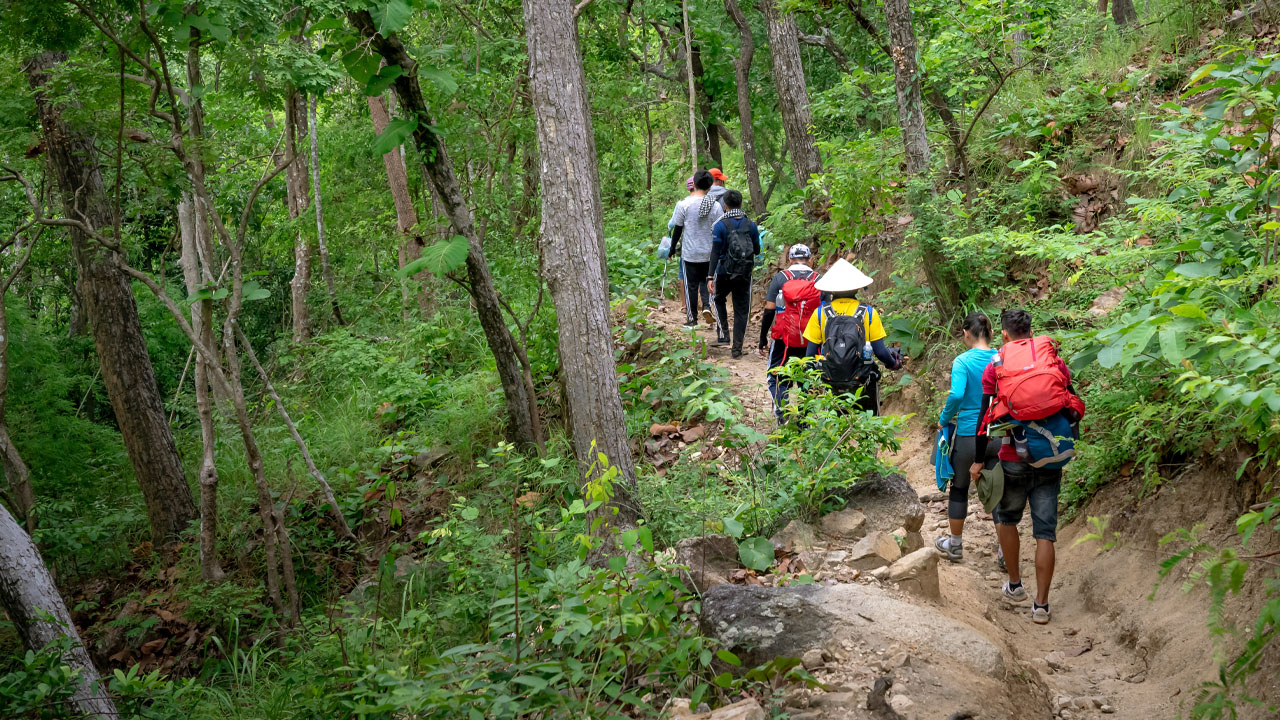
Making the transition from Sustainable Tourism to ‘Nature Positive Tourism’
…
When I speak to Travel & Tourism professionals on the importance of Nature Positive Tourism, it is clear many are just overwhelmed by the sheer number of targets required to protect both ‘people and planet’. From ending poverty and single-use plastics to managing energy consumption and animal interactions or halting biodiversity loss and carbon emissions, the expectation on tourism businesses to understand and adopt so many ‘sustainability’ measures can create gridlock.
How to BREAK The Gridlock
This was a key consideration when ANIMONDIAL co-drafted the World Travel & Tourism Council (WTTC) report “Nature Positive Travel & Tourism” and developed its accompanying Toolbox.
Not only were we providing businesses with a step-by-step guide on how to adopt a Nature Positive approach, but we also wanted to encourage a “bigger picture” perspective on sustainability planning. All too often, the sustainability approach focuses on generic, mainstream issues rather than considering the individual business’ impact, its environmental strategy and which issues are most relevant to achieving it.
How to ACT for Nature
Fundamentally, nature loss is not just an environmental issue but something that threatens our economies and societies too. Biodiversity loss threatens everything that ensures our prosperity, wellbeing, and survival, from the provision of life-preserving ecosystem services to our ability to lessen climate change and viral pandemics. Therefore, the ultimate goal of sustainability planning has to be conserving and restoring nature. To do this, we need to think about which issues are most relevant to our operations and supply chain, and what actions are needed to address them. This should be the starting point for any sustainable tourism strategy, and it is exactly the starting point of Nature Positive Tourism.
How to UNDERSTAND Nature Positive Tourism
Nature conservation must be the priority for all businesses, no matter the sector. A Nature Positive approach ensures each business identifies and mitigates its specific negative impacts and, through its operations and activities, seeks nature-related opportunities to restore and enhance biodiversity. While there will be common themes between businesses, such as reducing plastic use or avoiding deforestation, there will be differences in the range of identified impacts and their severity. Using this perspective, we can ensure that mitigating actions are material to the business and have the most effective outcome.
We now understand that is not enough just to consider how we use natural resources; all business efforts must ensure an overall positive impact by conserving and regenerating nature.
How to INTEGRATE Nature Positive Tourism
Accompanying the WTTC Nature Positive Travel & Tourism report is the Toolbox of resources to aid your transition from a sustainability paradigm to a comprehensive Nature Positive approach. The Toolbox includes a series of frameworks that demonstrate how the theory covered in the main report, and the straightforward Phases and Steps of the Nature Positive Tourism Roadmap, can be practically applied. It also provides additional external resources, support services, and business case studies that provide information to cover every business type.
How to START your Nature Positive Tourism approach
The first phase for all businesses is to consider operational dependency and impact on nature, a key business requirement in the Post-2020 Global Biodiversity Framework. This is covered by the first Phase of the Nature Positive Tourism Roadmap: Assess & Define. You can find helpful frameworks in the Toolbox to guide your business to defining its biodiversity loss drivers, or alternatively receive this information with aligned actions through ANIMONDIAL’s in-depth evaluation tool, Animal Footprint. Phase two, Reduce & Restore, focuses on addressing the identified priority issues from Phase one. The Toolbox provides a range of tools and services to suit any business’ needs. This includes services to identify the biodiversity in your key destinations, which can provide vital baseline data for Phase three: Monitor & Report. The fourth and last Phase of your Nature Positive approach is to Collaborate & Communicate: consider partnership building in your destinations to overcome challenges that are out of reach for your business alone, and ensure you shout about the great Nature Positive work you are doing! (Then, return again to Phase one to assess the impact of your actions!)
Adopting a Nature Positive approach requires businesses to think beyond sustainable resource use
We understand that this is a significant adjustment, but there is an urgent need to make this shift. There is no greater threat to our prosperity, wellbeing and survival than nature loss, and we all have a part to play to protect biodiversity and restore nature to reach our global goal to ‘Live in Harmony with Nature”.
» Please support the Vision for Nature Positive Travel & Tourism
» Use the Toolbox and begin your Nature Positive Tourism journey
» Discover your dependency and impacts on nature with Animal Footprint
COP15: The Good, the Bad and the Ugly
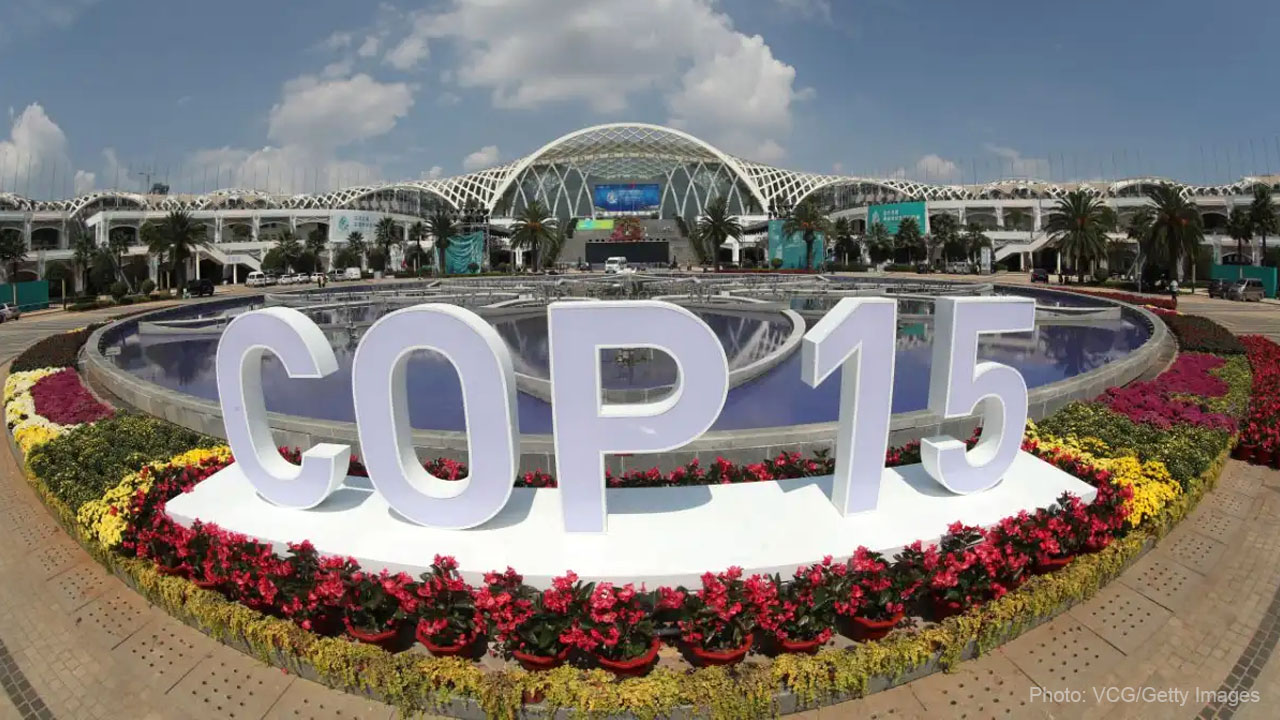
I joined many conservationists last week in cheering loudly when the Secretariat of the Convention on Biological Diversity (CBD) finally announced that COP15 – the global biodiversity summit – will go ahead in Montreal (Canada) from 5 – 17 December 2022.
…
The previous location of Kunming (China) had experienced two years of setbacks and there were even doubts whether the vital conference would take place in 2022.
COP15 seeks to secure the commitment of 196 countries (Parties to the CBD) to ratify the proposed Global Biodiversity Framework and adopt its nature protection goals. Effective implementation will require the efforts of global governments, businesses and all sectors of society to reduce and reverse environmental damage if the ambitious 2030 and 2050 targets are to be met – to halt biodiversity loss and restore nature.
The Good news is that confirmation of the COP15 dates will help to focus minds during the current negotiations. The additional time between now and December can be used to mobilise the high-level commitment required to avert a cataclysmic loss of biodiversity. We are already experiencing the Sixth Mass Extinction, with the rate of extinction of plant and animal species at least 1,000 times faster than would be expected without human influence. Time is of the essence, but we do still have a chance to lessen the decline and prevent ecosystem collapse. Failure to do so will threaten our wellbeing, prosperity and survival. The urgency must surely spur action.
ANIMONDIAL is proactively focused on supporting the travel and tourism sector. Our Services provide guidance for businesses that wish to adopt a Nature Positive approach, including capacity-building training, a directory of nature-friendly project partners, and an evaluation tool, in development, to identify dependency and impact on nature.
As with all industries, travel and tourism is implicated in driving biodiversity loss. However, unlike many other sectors, it has a unique opportunity to become a significant influencer for transitional change. I would go so far as to say that nature-aware travel and tourism, that values nature through all its offerings across destinations, could be a vital part of the solution to this biological crisis. This was a conclusion in our upcoming publication, Towards a Nature Positive Travel & Tourism, produced by ANIMONDIAL and the World Travel & Tourism Council.
The Bad news is that the content of the Global Biodiversity Framework has yet to be agreed by all Parties. While the pre-COP15 negotiations in Geneva and Nairobi have refined the targets, specifically those related to conservation and sustainable use, progress in other areas is reportedly slow and lacks ambition. Issues over money for protecting biodiversity, proposals to protect 30% of land and sea, and concerns over the stealing and commercialising of indigenous knowledge and genetic resources (biopiracy) have hindered an advance. Civil society is reportedly “appalled” at the lack of progress following the emergency meeting in Nairobi last week, calling on countries to “step up [and] show the leadership that this moment requires, and act urgently to find compromise and solutions.” It is hoped that governments will take the opportunity between now and December to overcome their differences and commit to ambitious actions to halt biodiversity loss and ensure stronger protections for life on land and in the sea.
The Ugly matter of benefit-sharing and biopiracy continues to divide ‘Developed Countries’ and ‘Developing Countries’. In fact, it threatens to derail the global agreement. Countries, including Brazil, India and Gabon, are demanding payment for drug discoveries and other commercial products based on their biodiversity. Meanwhile, additional demands on richer countries to pay £80bn in biodiversity finance to help subsidise conservation efforts, are causing further divides – similar to those currently hampering negotiations for the next climate change conference (COP27) scheduled for this November in Egypt.
There is a desperate need to overcome this impasse for the Global Biodiversity Framework to be ratified and biodiversity protections applied. Focused discussions and creative solutions will be needed to find common ground and move the process forward.
Travel and tourism, and the huge revenues generated through nature-based tourism, could well provide a solution. Not only does tourism underpin national and local economies, but job creation and community empowerment bring heightened value to nature, encouraging positive attitudes towards its protection. When structured well, our industry can help to provide income and development opportunities to fairly compensate lower-income countries for protecting their biodiversity. Often the most biodiverse locations on Earth, the low-income countries also help sustain travel and tourism and its revenues.
The increased international attention on commercial impacts on nature will present travel and tourism with an opportunity to demonstrate its potential for positive contributions and to play a leading role in building a global Nature Positive future.
» Want to know more about ANIMONDIAL and its Nature Positive services?
» Keen to learn how to Protect Animals and Nature in tourism?
» Unsure about the meaning of biodiversity, nature or Nature Positive?
» Find out about the Post-2020 Global Biodiversity Framework

Making the right choice to protect animals

Businesses will soon be required to adopt procedures that assess the environmental consequences of their decisions, specifically with an aim to minimise impact and act to better protect nature.
…
Ultimately this recognises that Nature is everyone’s business – and that businesses, as well as the rest of society, must play their part to reverse nature loss. While that sounds the right thing to do, navigating the complexities of the topic(s), to select and apply positively impactful outputs, is far from simple. In fact, it can give rise to many conflicts or dilemmas, such as – what should I try to protect, what are the priority issues, and how to decide actions towards set goal(s) when these may also affect progress towards others?
Protecting wildlife and nature is increasingly defined by our individual values. For instance, are we protecting species and ecosystems, of which wild animals form a key part, for our own sustainable use, or should wild places be left alone with little human interference? Equally, should we only consider wild species as numbers, such as the population of tigers, or should we give greater value to the wellbeing of each individual animal?
I certainly have my own views and values, but when it comes to me providing impartial guidance to Travel & Tourism professionals who wish to support wildlife conservation, I aim to provide information and an overview of opinions to allow informed decisions. Ultimately, the decision what or whom to support resigns with you and your business, but there are some fundamental considerations that I would always encourage before a decision is made.
To navigating this rocky path, I would suggest considering the following ethical perspectives to help you make your informed decision on business actions to protect animals and nature:
Sustainable viewpoint – animals and nature are essentially a resource for human use, the ethical constraint of protective measures is to make sure that wildlife can be used sustainably. For instance, CITES (Convention of International Trade in Endangered Species) manages legal wildlife trade, only restricting trade if a species is threatened with extinction.
Utilitarian viewpoint – aiming for the best outcome overall by considering both the negative and positive implications. Since animals can suffer if their circumstances negatively impact on their welfare needs, animal welfare should always be considered, even if the animals are in the wild. This perspective can have significant implications for wildlife management, particularly if the animals are causing harm to the people or the natural environment. Opting for a humane approach in all scenarios is our moral obligation.
Animal rights viewpoint – recognises that humans and other animals share physical, biological, and mental similarities, and we should not kill, confine, or otherwise interfere in their lives. This perspective considers the rights of humans and animals in equal measure.
Respect for nature viewpoint – protecting the ‘integrity’ of species, or overall biodiversity, where the protection of species in the ecosystem, to maintain functioning ecosystems, is prioritised. While invasive species that threaten either native species, or ecosystem health, should be removed or killed.
Local viewpoint – consideration for species that are particularly important for the sustainable development of the local community. Whereby animal and plant species, wild or modified, provide vital services or materials, or have a spiritual or cultural importance.
You have probably aligned yourself, or your business, with one of the above perspectives – and that’s not a bad thing. Although from my experience, while each of these ‘viewpoints’ present valuable insights, I would propose a combination of these perspectives when considering your wildlife and nature protection priorities. That way you are applying the necessary due diligence, considering the likely conflicts and dilemmas, before deciding the right choice for you, or your business.
In my opinion, it should not be all about sustainable use, for example. Sustainability does not necessarily mean an activity is responsible and does not cause unnecessary harm. While we do need to ensure our use of wildlife does cause its extinction, we must surely recognise that animals can suffer, and actions must be taken to protect an individual’s welfare whatever the overall goal.
Whatever you decide, I imagine you will agree, that whichever path and perspectives you adopt, it should aim to protect people, animals, and planet.
» Find out more about how businesses can support wildlife and nature conservation
» Keen to learn how to Protect Animals and Nature in tourism?
» Want to discover your business’ Animal Footprint?

Nature is everyone’s business

Returning from Geneva earlier this month, I was inspired by the sense of urgency demonstrated by national governments, the private sector and civil society, in their acknowledgement that biodiversity protection matters.
…
I attended the Convention on Biological Diversity (CBD) and the third meeting of the Open-ended Working Group (OEWG), which was tasked with considering the Post-2020 Global Biodiversity Framework. This is Nature’s equivalent of the Paris Climate Agreement, a framework of 21 action-oriented targets aimed at better protecting animals and nature over the decade to 2030.
There was a real impression from the meeting of 196 national governments and global stakeholders – the first in-person meeting for years – that nature is everyone’s business.
That the required transformational change in society’s relationship with animals and nature will need a cross-disciplinary and global collaboration – particularly if humanity needs to “Live in Harmony with Nature” by 2050 (CBD). Governments, business, and civil society must all work together to save nature to save ourselves.
ANIMONDIAL attended with Business for Nature, a global coalition of forward-thinking businesses and conservation organisations, to amplify a powerful leading business voice calling for governments to adopt policies now to reverse nature loss. It was encouraging to learn from various businesses, particularly those that rely on natural resources, and those whose operations potentially impact on nature, that actions are being applied to avoid or minimise negative impact. Furthermore, the realisation that business facilitation tools and procedures already exist and are helping business to mainstream biodiversity values and measure and mitigate impacts.
Sadly, ANIMONDIAL was the only business attending the CBD meeting representing the Travel & Tourism sector. Travel & Tourism is not only highly dependent on nature, but it is instrumental to the financing of protected areas across the globe, influencing policy change, and supporting sustainable development and community empowerment. In fact, this one sector has a significant opportunity to demonstrate its potential for positive contributions and play a leading role in building a global Nature Positive future.
This is the key messaging incorporated into the Travel & Tourism whitepaper on biodiversity and nature protection – soon to be published by the World Travel and Tourism Council (WTTC) in collaboration with ANIMONDIAL. This report will bridge knowledge gaps, outline common challenges, and set out a Nature Positive Tourism approach that combines climate change mitigation principles with nature protection and sustainable use, to achieve a nature-friendly, low-carbon future.
Whilst the ongoing CBD negotiations are reportedly, disappointingly slow and lack the required ambition (Wildlife Conservation Society), it is important to recognise the role of the private sector. When managed well, its potential to influence meaningful change.
My hope is that when we again congregate at the 15th meeting of the Conference of the Parties to the Convention on Biological Diversity (CBD COP15) in Kunming, China, later this year, the private sector, and in particular Travel & Tourism, will have an influencing role. Whilst governments will ultimately need to agree to adopt the Global Biodiversity Framework, it will be the private sector and the wider society that will be required to fulfil its goals. After all, Nature is everyone’s business.
» Keen to learn how to Protect Animals and Nature in tourism?
» Want to discover your business’ Animal Footprint?
» Unsure about the meaning of biodiversity, nature or Nature Positive?
» Find out about the Post-2020 Global Biodiversity Framework

Nature4NetZero – Keep it simple
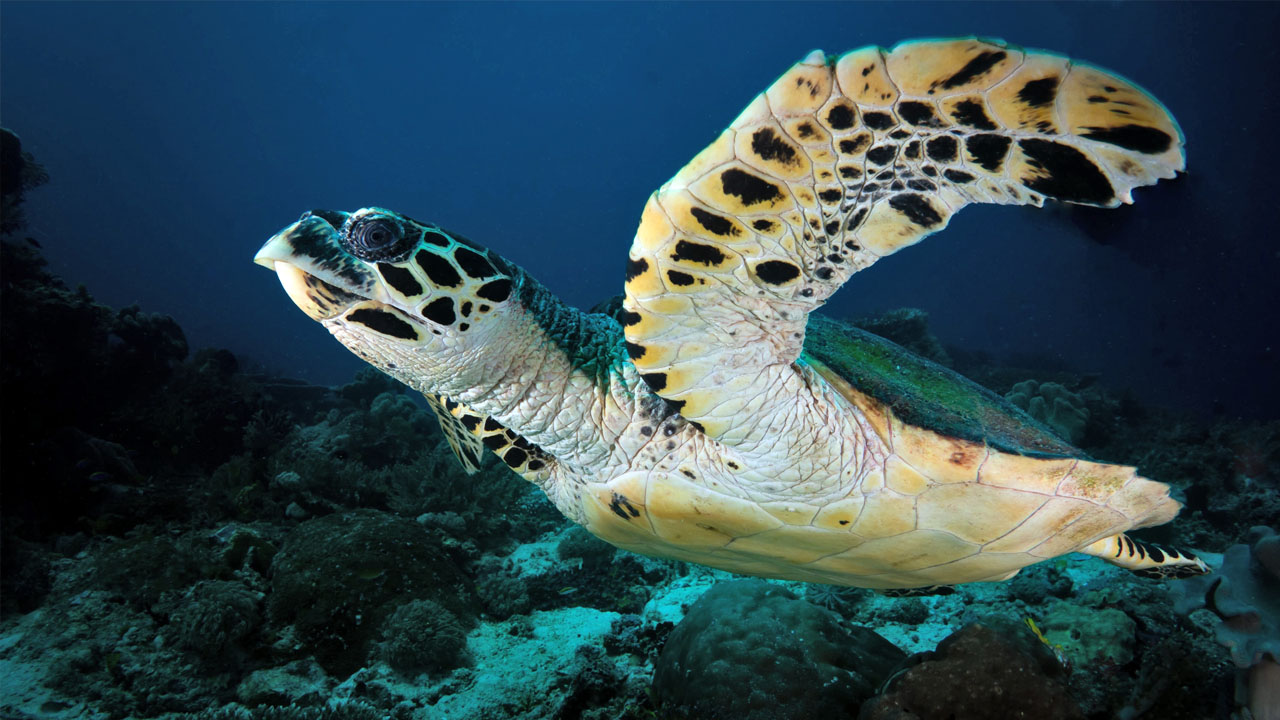
A key objective for ANIMONDIAL, as my colleagues and I draft the WTTC whitepaper on Nature Positive in Travel & Tourism, is to keep it simple. Not because the topic is simple – grappling with biological terms like ‘biodiversity’, ‘ecosystems’, ‘biosphere’, or even ‘Blue Carbon’ can be challenging – but because it is vital that these fundamentals are understood.
…
This understanding underpins the recognition that the natural world is not only integral to the growth and prosperity of Travel & Tourism, but also vital to the happiness, health, and survival of all humanity.
Consider the difference between biodiversity, ecosystems, and nature, for instance. These can easily be confused, and while their differences may not be important for some, an explanation can help convey why each has a different role to play. I compare nature to a machine: it needs various parts to operate, and energy to drive it. The parts include a wide range of ‘living’ things – this is what we term biodiversity – together with ‘non-living’ components – such as air, water, and soil – and all the interactions between them. Ecosystems are systems within the machine, separate (but connected) groups of living and non-living things, working together to perform many functions. They produce energy and circulate nutrients, clean and enrich the air that we breathe, and provide fresh drinking water, food, materials and even many important medicines – performing what are called ecosystem services. The analogy, while simple, explains the importance of each component and why their loss must be avoided, quite literally, at our peril.
The focus of ANIMONDIAL’s work is to support the Travel & Tourism sector to adopt a Nature Positive approach. As it sounds, this encourages and inspires actions that have a positive impact on nature, while taking measures to minimise or avoid activities that damage nature. Travel & Tourism can drive biodiversity loss and degrade nature, but managed well – by educating customers, employees, and in-destination partners, adopting safeguards, and supporting Nature-Based Solutions – Travel & Tourism can be a force for good, influencing local communities and government to better protect their natural heritage.
These actions are considered as integral to achieving Net Zero, another term that is increasingly promoted. This was the focus of ANIMONDIAL’s January blog. Net Zero is achieved when CO2 emissions are fully balanced by actions that remove and store carbon, so the net increase in CO2 in the atmosphere is zero. Many natural processes can be harnessed to remove and store carbon, and global experts recognise that biodiversity loss and climate change mutually reinforce each other and, being driven by the same human activities, can only be tackled together. Failure to do so will have negative consequences on human wellbeing and our quality of life.
While it is vital that all actions and activities that drive biodiversity loss and release CO2 are minimised wherever possible, actions that protect biodiversity and restore nature are equally important. Not only do such measures help maintain the planet’s functioning ecosystems (and the services they provide) but boosting biodiversity can help ensure that greater amounts of atmospheric carbon is absorbed and stored. Actions which use nature protection and enhancement to remove and store carbon are often referred to as Nature-based Solutions.
Maintaining nature’s ability to remove carbon from the atmosphere through photosynthesis in plants and store it in living tissues or dead ‘organic matter’ – either on land (Green Carbon) or in seas and oceans (Blue Carbon) – is key to Nature-based Solutions.
One of our main jobs at ANIMONIDAL is to ensure that the complex world of animal and nature protection is made simple for our clients. By using straightforward and clearly explained terminology we can help to ensure a greater understanding of the issues, the need to act, and the practical options available to adopt a Nature Positive approach.
A sustainable society requires both a stable climate and healthy ecosystems.
ANIMONDIAL has long championed a Nature Positive approach for Travel & Tourism, and in 2022 we celebrate our Year for Biodiversity, recognising the importance of biodiversity and its role in the race to Net Zero. Working with our partners, we aim to guide and support Travel & Tourism towards a Nature Positive future through:
- A whitepaper, in collaboration with the World Travel and Tourism Council (WTTC), that positions Travel & Tourism as a force for good in bringing greater value to nature and encouraging its better protection. It will explain the importance of nature, highlight the impacts of mismanagement, provide examples of best practice and champion the opportunities available to Travel & Tourism to halt biodiversity loss and restore nature.
- eTraining, in collaboration with the Adventure Travel Trade Association (ATTA). This comprehensive guide for travel providers, tour guides and DMOs on the importance of animal and nature protection in tourism will include expert guidance and interviews, accessible narrative and supporting materials.
- Evaluation of business performance to identify dependencies and impacts on biodiversity and the natural environment. Our ANIMAL FOOTPRINT tool is aligned to industry guidance and biodiversity targets to ensure your business is on course for Net Zero and Nature Positive.
- A Nature Positive toolbox, allowing us to provide Travel & Tourism partners with bespoke solutions to boost biodiversity, restore nature, and reduce carbon emissions both through our services and by engaging experienced specialist organisations.
» Contact ANIMONDIAL to find out more and how you can get involved
» Find out about ANIMONDIAL’s Animal Protection Network

The race to Net Zero explained

Businesses across all sectors are announcing their commitment to achieving Net Zero goals: Apple by 2030, Unilever by 2039 and Coca Cola by 2040, while Shell and British Airways do not expect to reach Net Zero until 2050.
…
But what does Net Zero mean? Why is it necessary? What actions need to be taken, and why are some targets so far off when a green business transformation is an immediate need?
The worry is that the talk of net-zero is mostly just talk, with plans to offset emissions alarmingly light on detail. (The Economist, after CoP26, 2021).
As you may have read in ANIMONDIAL’s November blog, CoP26 (the Climate Change Conference) concluded that urgent action is required to reduce the risks and impacts of climate change by limiting the average increase in global temperature to 1.5o Celsius. A failure to do so, particularly if average temperature rise exceeds 2o Celsius, will not only mean widespread negative impacts on human well-being and security, but is likely to cause severe damage to life on Earth.
Private-sector commitment to climate action is gaining momentum, and many travel and tourism businesses, including ANIMONDIAL, have signed up to the Glasgow Declaration on Climate Action in Tourism. This commits companies to halving emissions by 2030 and reaching Net Zero before 2050. According to UNWTO/ITF research, carbon dioxide (CO2) emissions from tourism grew by at least 60% from 2005 to 2016, with transport-related CO2 contributing 5% of global emissions in 2016. Unless the sector accelerates decarbonisation its CO2 emissions could rise 25% or more by 2030, and not fall, as required.
Reaching Net Zero is not ONLY reliant on limiting carbon emissions.
In 2021, the world’s leading climate and biodiversity experts acknowledged that climate change and biodiversity loss mutually reinforce each other and, being driven by the same human activities, can only be tackled together (IPCC & IPBES 2021). This acknowledges that there is no clear path to delivering climate mitigation and Net Zero without investing in nature.
Net Zero is achieved when there is a balance between the amount of greenhouse gas emissions produced and the amount removed from the atmosphere. (UK Government).
Each year, the Earth’s surface soaks up billions of tonnes of CO2 from the atmosphere. This includes absorbing (or sequestering) more than 50% of human-produced CO2 emissions through photosynthesis (the process of food production in plants) and storing carbon in plant tissue and soils. Oceans too absorb CO2, storing as much as a quarter of emissions from human activity each year. Therefore, nature, consisting of biodiversity and functioning ecosystems, offers a cost-effective solution to climate change mitigation and adaptation. In fact, more biodiverse habitats typically store more carbon and are more resilient to climate change.
A combination of ambitious nature conservation actions to protect, sustainably manage and restore ecosystems, together with ambitious reductions in CO2 emissions, is ESSENTIAL to deliver goals on climate mitigation, climate adaptation and biodiversity, and to meet the targets of the Paris Agreement.
As outlined in the UNWTO’s One Planet Vision, a green recovery that prioritises ecosystem wellbeing presents an opportunity for tourism to become a leader in transforming to a low-carbon future. By bringing greater value, and therefore protection, to animals and nature we can be an important part of the global solution.
A sustainable society requires both a stable climate and healthy ecosystems.
ANIMONDIAL has long championed a Nature Positive approach for Travel & Tourism, and in 2022 we celebrate our Year for Biodiversity, recognising the importance of biodiversity and its role in the race to Net Zero. Working with our partners, we aim to guide and support Travel & Tourism towards a Nature Positive future through:
- A whitepaper in collaboration with the World Travel and Tourism Council (WTTC), that positions Travel & Tourism as a force for good in bringing greater value to nature and encouraging its better protection. It will explain the importance of nature, highlight the impacts of mismanagement, provide examples of best practice and champion the opportunities available to Travel & Tourism to halt biodiversity loss and restore nature.
- eTraining in collaboration with the Adventure Travel Trade Association (ATTA). This comprehensive guide for travel providers, tour guides and DMOs on the importance of animal and nature protection in tourism will include expert guidance and interviews, accessible narrative and supporting materials.
- Evaluation of business performance to identify dependencies and impacts on biodiversity and the natural environment. Our ANIMAL FOOTPRINT tool is aligned to industry guidance and biodiversity targets to ensure your business is on course for Net Zero and Nature Positive.
- A Nature Positive toolbox providing Travel & Tourism partners with solutions to boost biodiversity, restore nature, and lessen climate change.
» Contact ANIMONDIAL to find out more and how you can get involved

CoP26: Mind the Gap!
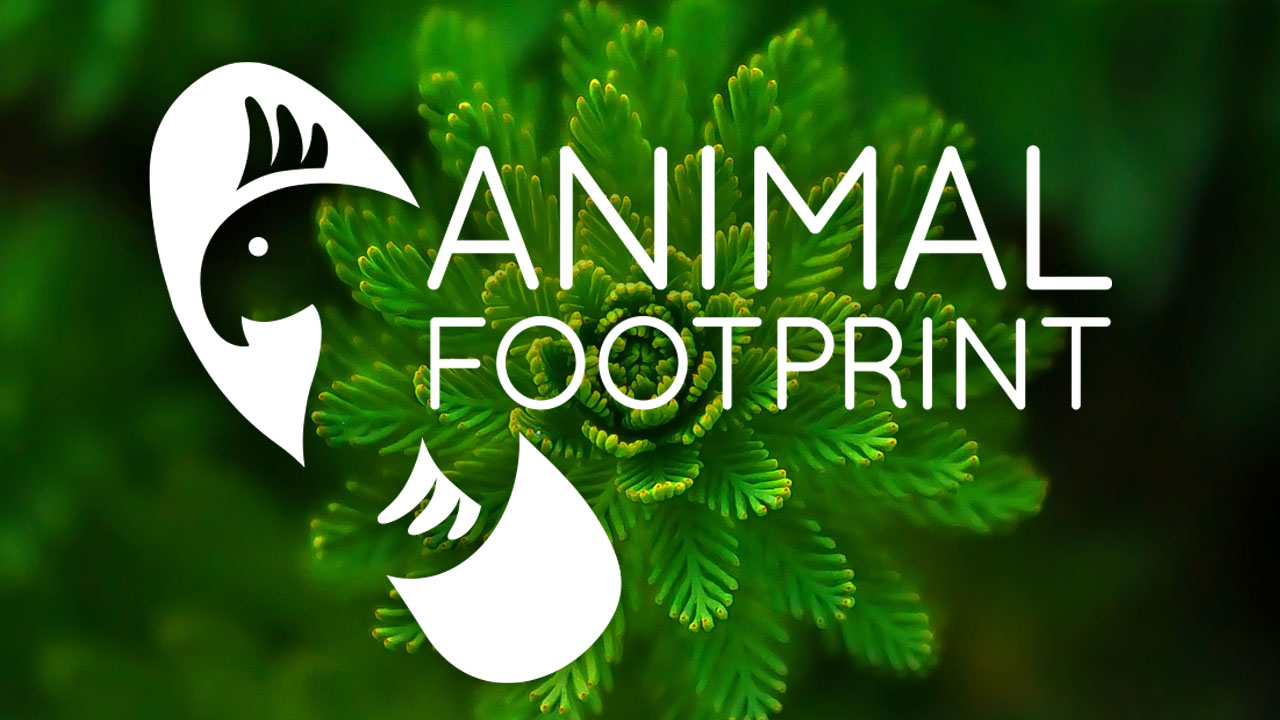
It really depends on who you speak to, whether CoP26 was judged a success. Yes, the Glasgow Climate Pact was signed by 197 countries in the final hours. And yes, there were some ground-breaking side agreements on coal, forests, cars, and finance. But there remains a huge gap between the pledged emission-reduction targets and those agreed in Paris in 2015.
…
Further, there remains a lack of commitment from high-income countries to subsidise the lower-income countries that are, for the most part, more affected by climate change. On a positive note, however, there is broad agreement that change is going in a positive direction, despite the gap that must be filled to limit global warming to 1.5°C
The Intergovernmental Panel on Climate Change (IPCC, 2018), the leading authority, states that exceeding a 1.5°C global temperature rise would be catastrophic for much of life on Earth. Some island nations believe that they will not survive the sea-level rise, let alone the increasingly destructive weather patterns.
What is certainly clear is that we can’t wait for our governments to step up and bridge the gap. CoP26 reports indicate that talk of net-zero is mostly just talk, with plans to offset emissions alarmingly light on detail (Economist, 2021). Climate change action has become a political football, with those willing to act only committing to distant targets. So, what can we do when our political leaders fail to take a strong lead?
Businesses must ultimately take charge, and I was encouraged learn that during CoP26 businesses were pushing ahead to focus minds and deliver actions. The ‘Glasgow Declaration on Climate Action in Tourism’, the ‘Declaration on Forests and Land Use’, and the ‘Ocean for Climate Declaration’ are all intended to bridge the gap between good intentions and meaningful climate action; tangible actions that finally and firmly put biodiversity on the climate agenda.
As countries and businesses – and even individuals – consider their actions to achieve net zero, few consider the relevance of natural systems. It’s ironic, when these can present a host of sustainable, low-cost solutions to many of our challenges: including harnessing the capability of many ecosystems to absorb and store carbon. You may have heard the recently-coined term “nature-based solutions”, referring to the protection and restoration of natural habitats and wild areas as a way to draw down CO2 from the atmosphere. Regular readers of ANIMONDIAL’s blogs will have already seen examples of the evidenced benefits of forests, oceans, and their biodiversity. Nature is an essential part of the effective and efficient response to climate change, and also to avoiding future pandemics and achieving the UN Sustainable Development Goals.
It is my firm belief that bridging the gap between emission reduction and carbon capture need not be a difficult and complex task. Effective actions to enhance biodiversity and restore nature will narrow that gap. Yes, it would help if our governments would regulate business to measure its impact on nature, and to demonstrate reduced negative impact, as proposed by Target 15 of the Post-2020 Global Biodiversity Framework. But why wait until this becomes law? We know what has to be done. Businesses, in fact anyone, can play their part in minimising negative impacts and boosting biodiversity.
What can you do?
ANIMONDIAL’s recommended path to minimising negative impacts, bridging the gap, and achieving Net Zero:
1. Assess
- Evaluate your business operations and activities against validated, inter-related indicators to measure your impacts and dependencies on nature. Discover your ANIMAL FOOTPRINT here.
- Identify where your business is doing well and, where you can do better for animals and nature.
- Calculate your carbon emissions across your operations: transport, goods, food & beverage, services, etc.
2. Act
- Commit to meaningful, time-bound, evidence-based targets across priority locations to halt and reverse the loss of nature and achieve Net Zero.
- Minimise your negative impacts on nature by reducing activities that drive biodiversity loss.
- Decarbonise your business operations and activities across your supply chain. Shift to alternative materials and actions to reduce carbon emissions.
3. Advocate
- Regenerate and restore ecosystems in partnership with others, applying nature-positive action across your value chain.
- Invest in nature-based, community-led solutions that support local people who live alongside natural areas, and encourage nature guardianship.
- Encourage governments and policymakers to adopt and implement ambitious nature and climate policies
ANIMONDIAL will continue to work with our travel and tourism partners to support and advise businesses to better manage their impacts on nature and boost biodiversity through community-based, nature-positive solutions.
» Work with us to make the world a better place
REPORTS FROM CoP16
Working in harmony with nature
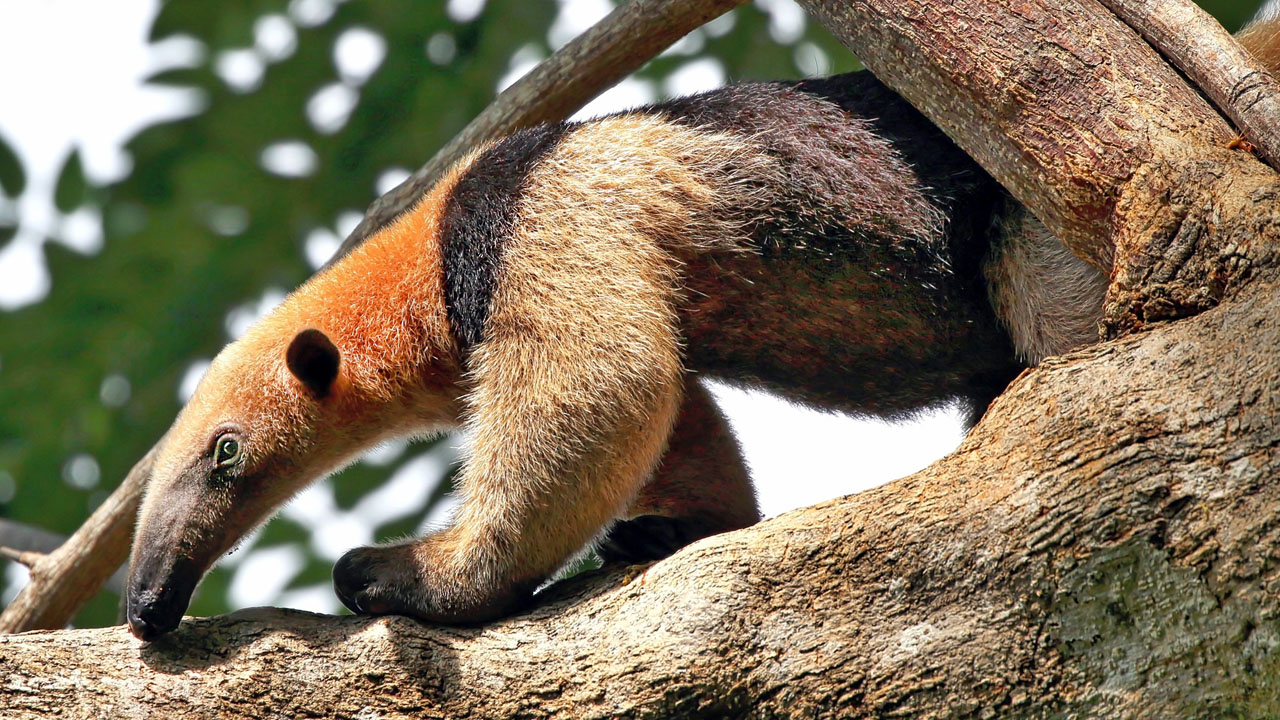
There is now no doubt, planetary health, animal exploitation, biodiversity loss, emergent disease and climate change are all interconnected and stem from the often-exploitative human activity on the natural world. The costs of inaction will be far greater than the costs of resolution. Whereby everyone will be affected unless everyone plays their part.
…
At CoP26 next week, the UN Climate Change Conference, world leaders will debate how and when, during a year of unprecedented challenges, they will implement actions to fulfil the Paris Climate Accords. Ultimately to reduce greenhouse gas emissions and limit global warming. Planet Earth is currently experiencing its highest atmospheric CO2 concentrations, that has not been equalled for millions of years. Inactively to reduce emissions will result in temperature rises that threaten the balance of life and the collapse of everything that gives us security.
An inevitable outcome of CoP26 are regulatory measures that will enforce decarbonisation, which are understandably at the forefront of the minds of the green-conscious business that wants to play their part. For the travel and tourism sector, however, limiting carbon emissions, whilst recommended, can only be minimal.
Nature-enhancing solutions, on the other hand, provides the sector with a relatively cost-effective solution to this conundrum. Nature is the very fabric on which all life on Earth is based. It includes the plants and the animals, the soil and the rock, and the air and water on which life depends. Whilst biodiversity refers to the multitude of living things that make up nature – the 8 million or so species on the planet – including us, humans. Nature has the natural ability to absorb and store carbon so, the greater the biodiversity, the greater the amount of carbon stored. Travel and tourism already value nature, from its vital eco-system services to the uniqueness it provides to the destinations we love to visit. This literal lifeline offers travel and tourism an opportunity to bring greater value to nature, ensure its better protection, and ultimately position the sector a force for good.
This was my proposition to the Latin American travel and tourism sector during the LATA’s EXPO this October. Latin America is hugely undervalued, considering it is the most biodiverse geographical region on Earth. It is home to most of the known amphibian species, birds, mammal species, and an amazing 60,000 species of tree! Not only that, but its forests produce 20% of the oxygen we breathe, act as a store of 50% of all the carbon dioxide we humans produce, absorb solar radiation, limit the Earth’s reflectivity, regulates our freshwater supply, and stabilise climatic conditions. All vital allies in our struggle to combat climate change. Yet 100 acres of rainforest is cleared every minute, with Amazon wildfires, said to cause the loss of 10 million hectares each year. Why? Because local communities currently put greater value on the conversion of forest to agricultural land, than the protection of the forests.
Tourism has the ability to reverse this disruptive, and life-destroying trend. Managed responsibly, tourism can bring greater value to these wild places, encouraging the better protection of animals and nature, and incentivise local guardianship rather than deforestation.
To that end, ANIMONDIAL and the LATA Community are working together to reduce travel and tourism’s negative impact on the region where possible and champion nature-enhancing practices. Launching in 2022, a year devoted to biodiversity, the initiative will celebrate Latin America’s rich biodiversity. Mobilising governments, businesses, and communities to bridge the gap in knowledge and understanding, identify and minimise negative impact, adopt sustainable practices and restore nature lost.
Whatever happens at CoP26, action on climate change is already affecting the way we value land and ecosystems. But waiting for our governments to act may be too late, let this be an opportunity for travel and tourism to take the reins, and ensure biodiversity-rich, lower income countries have the opportunity to benefit financially from restoring their climate-friendly landscapes. Delivering nature’s approach to lessening climate change and our ability to work in harmony with nature.
» Watch ANIMONDIAL’s presentation of LATA – The Value of Biodiversity
» Find out more about the significance of CoP26 and CoP15
CoPs & Dodgers! Defining steps to reduce the global crises
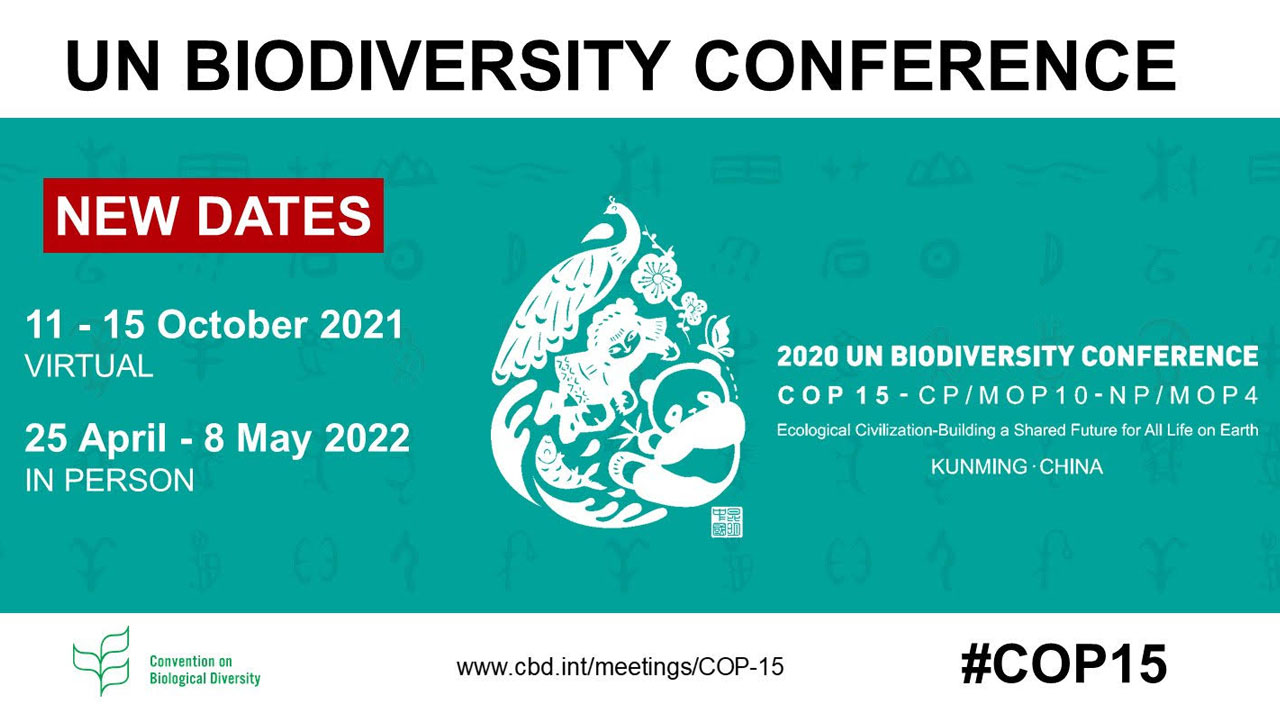
It is now just weeks until the world’s governments meet to decide the necessary steps for addressing biodiversity loss and climate change.
…
CoP15 (11 – 15 October) will consider global actions to reverse biodiversity loss, whilst CoP26 (31 October – 12 November) will consider global climate action. Both events will bring together the governments of most nations (a Conference of the Parties) to negotiate and agree targets and actions to tackle these increasingly imposing crises, now regarded as interconnected issues requiring a joined-up approach (IPBES & IPCC, 2021).
There is, of course, concern that there will be ‘the dodgers’, those who fail to recognise the threats and act on their responsibilities, and others who may still claim there is nothing to worry about. But the facts, and the evidence of the need to act, couldn’t be clearer. Stark reports show that Planet Earth is facing its 6th Mass Extinction of wildlife, with biological diversity disappearing and threatening our reliance on fresh air, water, food, and wellbeing (etc.), as well as contributing to the ever-eventful severe weather. These issues affect us all. There is literally no room for dodgers at these CoPs!
The scientific community has clearly presented the case: a “Code red for humanity” where “big systematic changes [are needed] and fast” to address “the huge scale of the challenges we are facing” (IPCC & IPBES, 2021). Whilst this is difficult reading, particularly at a time when the travel and tourism sector is seeking to bounce back following the pandemic, still we must act. While our governments decide on the CoP targets, we, as businesses and individuals, must not dodge our responsibilities. We must act now to minimise negative impact and adopt the necessary measures to fulfil biodiversity protection targets.
ANIMONDIAL, the specialist consultancy that advises the travel and tourism sector on all matters concerning animal and nature protection, has adopted the call to action: “Build Back Better for Animals”. It recognises that such an action will not only seek to reverse biodiversity loss, but also reduce climate change. Pursuing this mandate provides a valuable opportunity for the travel and tourism sector to become a driver of positive change, counterbalancing its unavoidable impacts with widespread direct and indirect benefits. ANIMONDIAL’s initiatives provide travel businesses with the means to identify and minimise impacts while supporting nature-based solutions: actions already aligned to the (anticipated) CoP15 outcomes.
ANIMONDIAL’s step-by-step approach will certainly cater for those businesses already looking to make strides to fulfil their biodiversity protection and climate action obligations, while the rest will wait for CoP outcomes, legal requirements, and likely incentives.
But why wait?
In fact, we already know the probable outcomes of CoP15, as presented by the Post-2020 Global Biodiversity Framework, which governments are currently considering. The High Ambition Coalition (HAC) for Nature and People, a group of 60 countries chaired by Costa Rica, France and the UK, is pushing for far-reaching, concrete action on biodiversity. It joins UNEP and multiple NGOs in advocating, as a minimum, the goal of putting 30% of global land and sea area under protected status by 2030. Some supporters include additional milestones such as a 5% increase in the “area, connectivity and integrity of natural systems” and the halting or reversing of the current increase in the global extinction rate.
These are all measures that can become objectives for the Travel and Tourism sector. Nature is already integral to much of the tourism product offering and the destinations we all love to visit. Ensuring its protection, and where possible, regeneration, will incentivise the better protection of nature and wildlife, from community to government levels, through the benefit of tourism revenues. This presents a relatively simple nature-based solution to counterbalance tourism’s unavoidable impacts.
Reducing carbon emissions is the current call to arms, and this is certainly required. But as travel businesses, emission reductions will always be limited. However, tourism’s ability to better protect animals and nature is a huge opportunity to fulfil obligations addressing both biodiversity loss and climate change.
How to Build Back Better for Animals

ANIMONDIAL’s path to nature-based solutions through tourism
» Check out ANIMONDIAL’s Services
» Join our mission to Build Back Better for Animals

